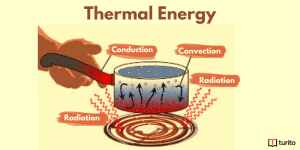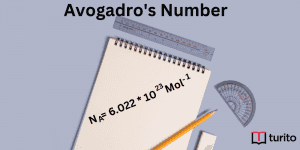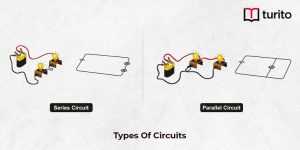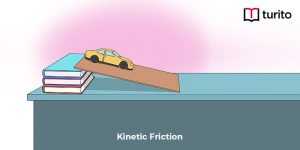Protons are defined as the positively charged particles present in an atom’s nucleus. An atom comprises electrons, protons, and neutrons. Its entire mass is concentrated in the nucleus that lies at its centre. The collective name for protons and neutrons present in a nucleus is nucleons. Electrons orbit around the nucleus in a circular path.
What is the Mass of Proton?
The relative mass of one proton is approximately equal to 1.6725 × 10-27 kgs. While protons carry a positive charge, electrons have a negative charge. Neutrons are chargeless. The number of electrons and protons in an atom is equal; therefore, it is electrically neutral.
Discovery of a Proton
In 1886, Goldstein found that the charge to mass ratio of positive particles is dependent on the nature of the gas present in the discharge tube. This indicates that the charge-to-mass ratio for different gases was different.
It was observed that the charge to mass ratio of the positively charged rays was highest for hydrogen gas used in the discharge tube. The main reason for this is that hydrogen is the lightest atom, so its mass will be the least, and the e/m ratio is the highest.
The name given to the positively charged rays in the discharge tube was proton, which can be generated when an electron is removed from the hydrogen atom.
H (hydrogen atom) → H+ (proton) + e– (electron)
Therefore, we can say that a proton is a hydrogen ion (H+).
Properties of Protons
Proton is positively charged with the following physical properties:
Mass of Proton: The relative mass of proton equals the mass of a hydrogen atom. There is one proton and one electron in a hydrogen atom. As an electron’s mass is considered negligible, it can be said that a hydrogen atom’s mass equals that of a proton. Mass of proton is considered 1841 times the electron mass.
Mass of one proton = 1.676 × 10-27 kg = 1.676 × 10-24 g = 1.6726219 × 10-27 kg
The Proton charge is equal to and opposite to that of an electron. Therefore, it has a positive unit charge.
Charge of a proton = + 1.601 × 10-19 coulombs
What are electrons, protons, and neutrons?
Atoms comprise small particles known as protons, electrons, and neutrons. The nucleus contains neutrons and protons in the centre of the atom. Electrons surround it. While protons are positively charged, electrons carry a negative charge.
Proton is a stable subatomic positively-charged particle having a charge equal to that of a unit electron charge. It has a rest mass of 1.67262 × 10−26 kg, which is 1,835 the electron mass.
The nuclei of all atoms are made up of electrically neutral neutrons and protons, except the hydrogen nucleus, which contains only one proton. Every chemical element’s nucleus has the same number of protons. The atomic number of an element is defined by this number, and it also determines its position in the periodic table. When the number of electrons and protons orbiting the nucleus is equal, the atom is considered to be electrically neutral.
Proton’s discovery traces back to the time when the earliest investigations about atomic structure were being made. While studying ionised gaseous molecules and atoms which had undergone electron stripping, JJ Thomson and Wilhelm Wien identified a positively charged particle whose mass is equal to that of the hydrogen atom. Ernest Rutherford, 1919 showed that under alpha-particle bombardment, nitrogen ejects what appears to be hydrogen nuclei. By 1920, the hydrogen nucleus was accepted as an elementary particle and was named proton.
In the late 20th century, high-energy particle Physics studies revised the structural understanding of the proton’s nature within the group of subatomic particles. It has been revealed that protons and neutrons are composed of smaller particles and named baryons which are particles made up of three elementary particles called quarks.
High velocities are given from protons from ionised hydrogen in particle accelerators and are commonly employed as projectiles to produce nuclear reactions and study them. The main constituents of primary cosmic rays are protons. They are also among the products of some forms of artificial nuclear reactions.
Mass of Proton
Mass of Proton is the combination of the total mass of current quarks and the gluons binding them. Protons and neutrons comprise smaller particles and are classified as baryons. The strong interaction between these subatomic particles is due to the exchange of gluons, which are the massless particles acting between quarks.
The Mass of one Proton is equal to 1.672621898(21)×10−27 Kg
Mass of Proton in Other Units
The relative mass of proton can be defined in several different units like the mass of proton in kg, the mass of the proton in amu, and proton mass in MeV.
Following are the mass of proton in different units:
| MASS OF PROTON | UNIT | Symbol |
| 1.672621898(21)×10−27 | kilograms | kg |
| 1.672621898(21)×10−24 | grams | g |
| 1.007276466879(91) | atomic mass units | u |
| 938.2720813(58) | MeV | Mev/c2 |
Proton Mass Calculation
In 1886, Goldstein noticed in his experiment that the charge: mass ratio of positively charged particles is dependent on the nature of the gas present in the discharge tube. This means that the charge-to-mass ratio for different gases varies. He made an observation that the charge: mass ratio of the positively charged rays was higher for hydrogen gas used in the discharge tube. This was mainly due to the reason that the hydrogen atom has the lowest weight, so its m will be the least. Therefore, the e/m ratio here will be the highest. Later, these positively charged rays in the discharge tube were named protons. It can also be said that we can produce a proton if an electron is removed from a hydrogen atom or a proton is a hydrogen ion.
The atomic mass of 1 proton can be calculated by using the three methods given below:
- Calculation from theory
- Atomic Mass Method
- Charge/Mass comparisons with electron
1. Calculation from Theory: Einstein gave his relativity theory in the 20th century, which beautifully explained the concept that energy and mass are interchangeable. This means that mass can be changed to energy and vice-versa. The mass of 1 proton in amu can be derived from the theory mentioned above in this method.
The internal structure of protons consists of three quarks held together by attraction forces called gluons. According to naive norms, each quark would be given a mass of ⅓ of a proton in amu. However, in actuality, 95-98% of the proton mass is not contributed by the quark mass. On the other hand, the mass of protons is mostly derived from the interaction energy between the quark forces with the help of the energy and mass interchangeable theory or E=mc2.
2. By Atomic Molar Mass Method: One mole of a hydrogen atom has a weight of about 1.0079 g. Therefore, the weight of each mole of proton in a hydrogen atom is about 1.0079g.
As one hydrogen mole is equal to 6.022 * 1023 particles and the weight of a proton is equal to 1.0079 g, we can divide the proton mass with the mole number and get (1.0079 /6.022×1023). Therefore, the mass of a proton is equal to 1.6737×10-24 g.
Note that an atom has an electron to balance the charge of a proton. This experiment can be performed with an atom of the periodic table.
3. Mass Comparisons with Electron: The bend of the atom in this method is quantified when entering the standardised magnetic field or electric field. The bending magnitude also indicates the mass of the proton by performing its comparisons with the mass of electrons. An experiment’s main idea is the same as causing a rolling ball to move where a heavy proton will always be deflected by a constant force to a small extent from a straight-line movement. This deflection is even more in electrons.
Conclusion
As protons are vital subatomic particles, having knowledge about their properties is very important from a Chemistry point of view. We hope that this article helped clear some of your misconceptions about the topic and got you acquainted with some more facts you were unaware of.
Frequently Asked Questions
Q) Do electrons have mass?
A) When we compare an electron with one neutron proton mass, it is considered massless. Also, electron mass is neglected when we calculate an atom’s mass number.
Q) What does the inside of a proton look like?
A) Proton is an important part of the nucleus of an atom. It comprises three quarks that are connected by gluons.
Q) Who was the person to discover protons?
A) Rutherford discovered protons in his experiment called gold foil in 1909.
Q) How many protons will weigh 1 kg?
A) 103 moles of protons
Q) What is the mass of proton in gram(g)?
A) 1.672621898(21)×10−24 g is the mass of a proton in grams

Relevant Articles
Understanding Thermal Energy: What It Is and How It Works
Thermal energy is essential to our daily lives, from warming …
Understanding Thermal Energy: What It Is and How It Works Read More »
Read More >>Avogadro’s Number: Meaning, Importance, and More
Introduction The concept of measuring the microscopic particles that make …
Avogadro’s Number: Meaning, Importance, and More Read More »
Read More >>Kinetic Friction – Definition, Laws, Types
Kinetic Friction Kinetic force is a force acting between two …
Kinetic Friction – Definition, Laws, Types Read More »
Read More >>




















Comments: